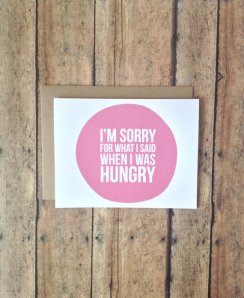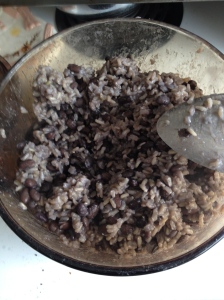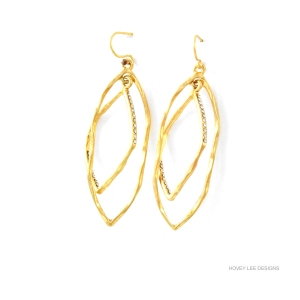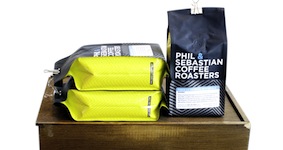 “I will definitely not participate again next year.” Each year this phrase flies from my mouth within the final days of my Live Below the Line challenge. Fatigue and hunger have a way of dampening my exuberant enthusiasm for changing the world and I assure myself that this is the last time I go five days with limited choice and calories. This year was no exception. However, in the 2 months since the challenge has ended I’ve realized that Live Below the Line has value that stretches beyond those 5 days. Of course, Live Below the Line is valuable to the various charities who raise funds to continue their poverty ending work. Canadian participants of the challenge raised nearly $150,000 that will go towards ending extreme poverty. And in turn, this is hugely valuable to the international community and to those people who are working hard to lift themselves out of poverty.
“I will definitely not participate again next year.” Each year this phrase flies from my mouth within the final days of my Live Below the Line challenge. Fatigue and hunger have a way of dampening my exuberant enthusiasm for changing the world and I assure myself that this is the last time I go five days with limited choice and calories. This year was no exception. However, in the 2 months since the challenge has ended I’ve realized that Live Below the Line has value that stretches beyond those 5 days. Of course, Live Below the Line is valuable to the various charities who raise funds to continue their poverty ending work. Canadian participants of the challenge raised nearly $150,000 that will go towards ending extreme poverty. And in turn, this is hugely valuable to the international community and to those people who are working hard to lift themselves out of poverty.
But I’ve also realized that this challenge impacts me in deeply personal ways. Every time I Live Below the Line I’m encouraged by the show of support from family and friends. I’m always a little surprised that so many people care so deeply about this issue. And this reminds me that I am making a difference and that my actions not only impact people on the other side of the world, but also impact those closest to me. And with that comes the challenge to do more.
If I’m perfectly honest I can become somewhat lackadaisical in my actions towards ending extreme poverty. Living Below the Line serves as an annual reminder to redouble my efforts and take stock of my current habits. Live Below the Line is kind of like New Year’s Day as I look back to see the positive changes I’ve made, but also resolve to do better moving forward.
This year the challenge made me more aware of how much food we throw away. Since moving to Calgary our schedules are less consistent. Even though we usually go to the grocery store every couple of days, which in theory should cut back on waste, I still find that we end up throwing away items that have been forgotten about at the back of the fridge. Often I plan to eat the leftovers from last night’s dinner, but am called away to work at the last minute and either forget about them or know I’ll have no time to heat them up so I leave them in the fridge only to throw them away the following week.
And I’m not alone. A 2012 study revealed that Canadians waste roughly $27 billion worth of food every year. You might think that this comes largely from the strict food rules that restaurants and supermarkets must adhere to, but think again. Just over half of that food waste comes from Canadian homes when people like myself throw their leftovers and rotting produce in the garbage and compost. This staggering waste puts pressure on food producers world wide, but it also poses a risk to the environment as rotting food in landfills significantly contributes to greenhouse gas emissions.
I’ve decided to take 3 steps to decrease the amount of food we throw away and the amount of waste we produce.
1) We’re aiming to become more mindful of what we purchase and when we will eat it. For us that will require planning ahead a bit better than we have been and may even mean pre-planning our meals for the work week. Although common wisdom says more trips to the grocery store will equal less waste, I think we may try less trips and work with what we’ve got. By planning ahead we can take a realistic look at when we’ll actually eat those leftovers. Buying adequate freezer containers will also help us to waste less as we can pop things in the freezer for those times when life moves more quickly than our planning and we’re unable to eat as planned.
2) Growing our own garden. One of the perks of living in a home with even the tiniest backyard is the ability to grow our own produce. One of the most frequently thrown away items in our house is lettuce and spinach. We decided to grow our own greens to cut back on our waste and packaging. We’ve planted a variety of foods with varying germination periods so that we receive the instant gratification from our efforts with foods like lettuce and berries, but also enjoy the fruits of our labour well into the winter months with potatoes and beets. Our garden is small, but in this small way we’re doing our part to decrease the pressure on the world food system.
3) Composting. Compost is certainly not a substitute for simply not throwing away our food and only purchasing what we will actually eat and use. However, there are times when we produce food waste that cannot be easily used, such as banana and avocado peels. In this case we thought it would be fantastic to compost. Not only is it better for the environment, but it will provide us with nutrient dense soil to use in our garden and plants around the house. In our small and temporary home we decided it would be best to compost in a small container using worms. We ordered a half pound of red wigglers from Green Calgary and they now live happily in a small container in our garage slowly but surely working their way through our waste.
My commitment to decreasing the amount of food we throw away was strengthened by this video from Sustainable Table.












